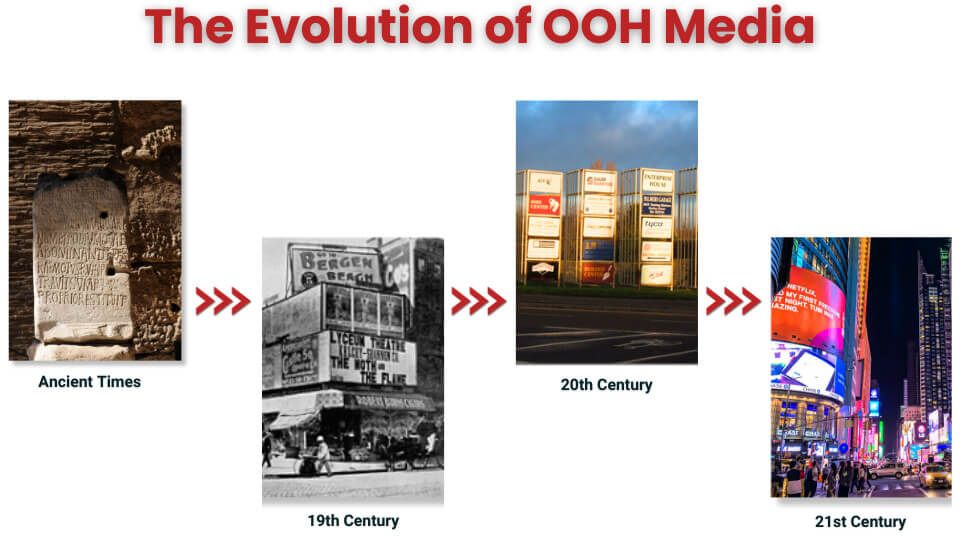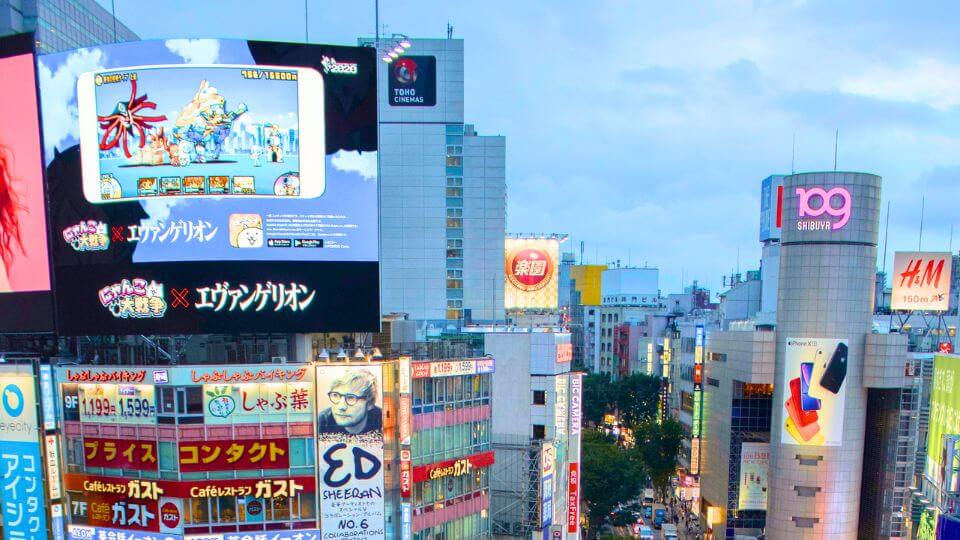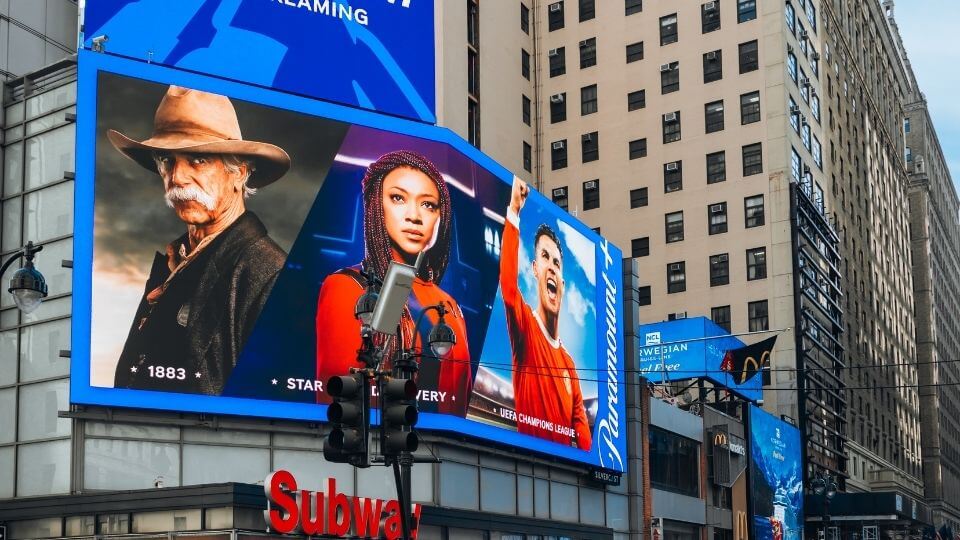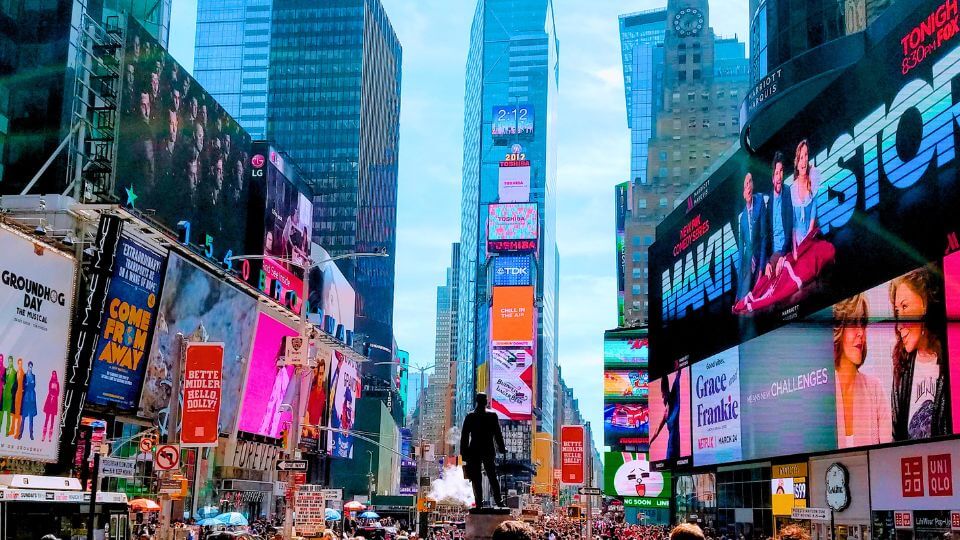June 12, 2024
Balancing Act: The Continuing Relevance of Static OOH Media
Out-of-home (OOH) advertising has an extensive history that dates back to ancient civilizations. The first forms of OOH advertising were messages cut into stone tablets and painted on public building walls, intending to communicate essential information to the public. The introduction of large-format billboards in the nineteenth century marked the start of the modern era of out-of-home advertising. These early billboards, which were sometimes painted by hand, became an important tool for businesses to reach a large audience in increasing urban areas.
As the 20th century ensued, the OOH sector changed considerably. Advances in printing technology enabled the mass manufacturing of colourful, high-quality posters. OOH advertising has grown beyond billboards to include but is not limited to transit ads, street furniture, and place-based media. The emergence of neon signs and illuminated billboards transformed outdoor advertising, capturing passersby’s attention both day and night.

Another pivotal development occurred at the turn of the 21st century, with the introduction of digital technology. Digital Out-of-Home (DOOH) revolutionized the way advertisers interact with their audiences by introducing moving creatives, dynamic content capabilities, real-time updates, and interactive features. Despite these developments, static OOH takes up over 70% of the existing OOH market inventory. Traditional OOH media has remained relevant, providing distinct benefits that complement DOOH capabilities.
The Rise of Digital Out-of-Home and Programmatic Digital Out-of-Home
DOOH has introduced various changes to the advertising scene including programmatic digital-out-of-home (pDOOH), providing several distinct benefits:
- Flexibility: pDOOH enables advertisers to swiftly change content in response to time of day, weather, and current events. This flexibility allows for extremely focused and timely messaging.
- Engagement: Interactive screens and touchpoints engage customers in ways that static ads do not, resulting in deeper brand encounters and memorable experiences.
- Analytics: Advanced monitoring and data analytics offer precise insights into a campaign’s success, allowing advertisers to enhance & fine-tune their plans to achieve greater outcomes.
- Creativity: The dynamic nature of digital screens encourages creative storytelling through animations, films, and real-time updates.
However, while DOOH and pDOOH offer these modern benefits, it is important to highlight the ever-present virtues of static OOH media, which continue to play a critical role in the outdoor advertising ecosystem.

Why Static Out-of-Home Media Remains Indispensable
Static OOH media, such as traditional billboards, posters, and transit displays, provide five major benefits that make them indispensable in the advertising mix:
- Cost-Effectiveness: Static OOH media often has lower production and maintenance expenses than digital forms. This makes it an appealing choice for advertising with limited budgets.
- Broad Reach: Static advertising placed strategically can reach a large number of people, especially in high-traffic areas. They provide continual exposure to a big audience, guaranteeing that the message is seen by a significant number of individuals over time.
- Consistency: A static ad maintains a consistent brand presence while conveying a clear and basic message without the distractions of digital animations or dynamic material. This consistency can improve brand recognition and emphasize crucial themes.
- Simplicity: Because static advertising is simple, they are typically easier for consumers to understand while on the go.
- Durability: High-quality static ads can resist severe weather conditions, making them a dependable, long-term advertising choice. Unlike digital screens, which require frequent maintenance, static advertisements are a low-maintenance option.

Finding the Balance between Digital and Static Out-of-Home Media
While DOOH provides current benefits, static OOH media’s classic attributes should not be neglected. The most effective OOH advertisements frequently use a combination of both media to achieve various objectives. Here’s why a balanced approach is important:
- Complementary Strengths: Combining DOOH’s dynamic capabilities with static OOH’s consistent visibility can result in a more holistic advertising plan. A static billboard can maintain a consistent brand presence, while a neighbouring digital screen can display timely promos or interactive information.
- Diverse Audience Targeting: Static OOH engages a wide range of audiences, including those less inclined to use digital devices, while DOOH appeals to tech-savvy consumers with interactive content. Both formats effectively drive online searches, connecting offline and online engagement.
- Enhanced Campaign Impact: Using both forms enables comprehensive storytelling and sequential messaging, which increases the total campaign impact. For example, a campaign could use static billboards to raise general awareness and digital screens to provide detailed information or calls to action.

LMX: Helping Media Owners Scale Their OOH Business
In a world increasingly dominated by digital media, static OOH advertising remains a powerful and necessary tool. Its distinctive qualities complement DOOH’s dynamic capabilities, providing a balanced approach that can improve the success of advertising campaigns. As the OOH market evolves, embracing both static and digital forms will be critical in attaining long-term success. Location Media Xchange (LMX) is here to help media owners navigate this terrain and maximize the potential & occupancy of their OOH assets.
At LMX, we recognize the changing landscape of OOH advertising and the value of combining static and digital formats. We give OOH media owners the tools and experience they need to effectively scale their OOH business, whether using DOOH or static media. By leveraging LMX’s experience, media owners can ensure their competitiveness in a continually evolving industry.
Reach out to us today to learn more about our services.
Want to attract more advertisers to your OOH inventory? Discover LMX.